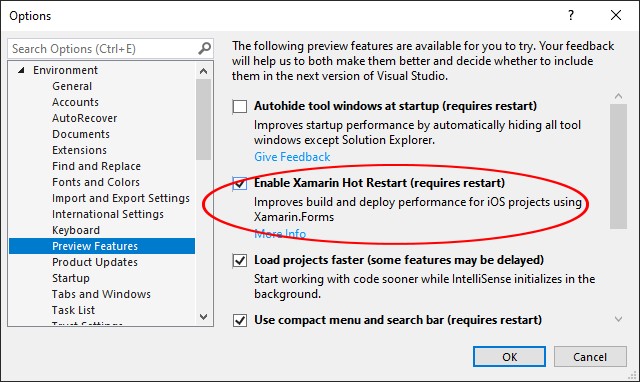

- USE XAML ON VISUAL STUDIO FOR MAC UPDATE
- USE XAML ON VISUAL STUDIO FOR MAC CODE
- USE XAML ON VISUAL STUDIO FOR MAC WINDOWS
In order to add UWP controls to the class library, we’ll update the project file to use the uap9 target framework (this step isn’t required if you’re use the UWP class library project template). Note that you could also use a UWP class library for this and follow the same steps. Custom Controlįor the custom control scenario, let’s start by creating a new project based on the Class Library project template. If you want to use your own custom controls, or third party controls, you’ll need to follow some additional steps. What we’ve seen so far is simply using the built-in UWP controls. Now, we can run the application, click on the button entitled “Simple UWP Button” and then click on the Say Something button.
USE XAML ON VISUAL STUDIO FOR MAC WINDOWS
The app.manifest file needs to be set as the Manifest file for the Windows Forms project via the Application tab of the Project Properties (Right-click on the project in Solution Explorer and select Properties). To fix this issue we need to include an app.manifest file with the following content: Important Note: If we run the application at this point we’ll see an error shown in the following image, that reads “WindowsXamlManager and DesktopWindowsXamlSource are supported for apps targeting Windows version 26.0 and later”. Private void UwpButton_Click( object sender, Windows.UI.Xaml.RoutedEventArgs e) UwpButton.VerticalAlignment = Windows.UI. UwpButton.HorizontalAlignment = Windows.UI. Var myHostControl = new .XamlHost.WindowsXamlHost() The WindowsXamlHost is the wrapper that makes it really easy to add UWP based controls to the Windows Forms application.
USE XAML ON VISUAL STUDIO FOR MAC CODE
Next, we’re going to add code in the SimpleButtonForm constructor to create the instance of both the Button and the WindowsXamlHost. To do this, the first thing we need to do is to reference the .XamlHost NuGet package. Now let’s start with the first scenario where we’re just going to display a standard UWP Button inside the SimpleButtonForm. New ThirdPart圜ontrolWithStyleForm().ShowDialog() Private void btnThirdPart圜ontrolWithStyle_Click( object sender, EventArgs e) Private void btnThirdPart圜ontrol_Click( object sender, EventArgs e) Private void btnCustomControl_Click( object sender, EventArgs e) private void btnSimpleButton_Click( object sender, EventArgs e) The code behind for these buttons is relatively simple. Next I’ll create four buttons on the MainForm, which we’ll use to launch the four forms we just created. NET Core 3.1 for the target frameworkĪfter creating the project we’ll rename Form1 to MainForm, and then proceed with adding four more forms that will host the four scenarios we’re going to look at. NET Framework based template is still called called Windows Forms App (.NET Framework)). I’m currently using Visual Studio 2019 16.8 preview 2.1 where the project templates have been renamed – this template was formerly called Windows Forms App (.NET Core), which points to Microsoft’s intent to move developers to building Windows Forms app off. In Visual Studio, we’ll create a new project using the Windows Forms (WinForms) Application project template. NET Framework, I would highly recommend looking at migrating to. NET Framework but there are some limitations for third party controls. As Miguel discusses in his post, there is support for. Let’s get into this – we’re going to start with Windows Forms and we’re going to be working with a Windows Forms application that’s sitting on. WindowsXamlHost control for Windows Forms and WPF.XAML Islands v1 – Updates and Roadmap (June 2019).



 0 kommentar(er)
0 kommentar(er)
